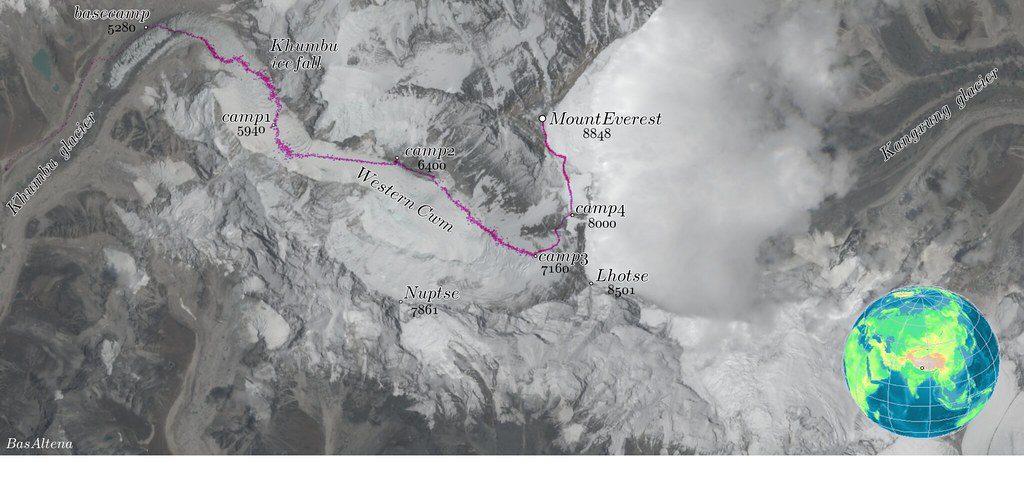 Thousands of mountaineers and trekkers will descend upon the Himalayas for the 2023 Mount Everest spring climbing season, eager to summit the tallest mountain in the world and K2, Kanchenjunga, and Annapurna, some of the highest peaks in the Himalayas and the world.
Thousands of mountaineers and trekkers will descend upon the Himalayas for the 2023 Mount Everest spring climbing season, eager to summit the tallest mountain in the world and K2, Kanchenjunga, and Annapurna, some of the highest peaks in the Himalayas and the world.
It’s not easy. Frostbite, gastrointestinal trouble, altitude mountain sickness, twisted ankles, snow blindness and many other ailments will challenge climbers and trekkers at every step.
Last year, a record-breaking number of climbing permits were issued, and we conducted a record-breaking number of rescue operations. The 2023 spring climbing season will set new records.
“There will be more people in the region adventuring, partly from the COVID backlog but also due to increased demand to go trekking and climbing,” said legendary mountaineer and a member of the Global Rescue Mountain Advisory Council Ed Viesturs.
On the Ground in Nepal
Global Rescue will deploy a team to Nepal to arrange rescue operations, including helicopter and ambulance transports, hospital admissions and looking after individuals admitted to a hospital for care.
As an experienced high-altitude mountaineer with ascents in the Himalayas, Europe, South America and Africa, I will be on the on-the-ground operations team handling 200 high-altitude rescues or more.
An “average day” during a Himalayan deployment is anything but typical. During the two-month spring Mount Everest climbing season, several rescue operations will be performed each day, keeping me and the deployment team busy from before dawn until nearly midnight. The busiest time is the two-week Mount Everest summit window when the up to 25 rescues a day.
Recovering climbers and trekkers is much more than a mountain chopper rescue. The deployment team locates multiple areas to support individuals throughout their rescue, transport, recovery and safe return home.
Some are stationed at the Kathmandu airport coordinating helicopter operations. Others are in Lukla preparing to receive individuals rescued from the mountains and to assist with their medical needs. Still, other on-the-ground operations teammates visit and support hospitalized people in local medical facilities, assisting them with the next steps in getting home safely.
Avalanches and Bad Weather
In October 2022, massive avalanches swept down Mount Manaslu and Mount Draupadi ka Danda II. While guides and mountaineers climb safely to the best of their ability, knowledge, and skill, Mother Nature controls them. Avalanches are a dangerous reality in the snowy high mountains, and so is the brutal weather.
Mount Everest, K2, Ama Dablam and many of the Himalayan Mountains have the fiercest weather conditions on Earth, with temperatures plunging to minus 40 degrees F (minus 40 degrees C) and winds blasting at more than 100 mph (161 kph).
Preparing for them is critical to the medical and rescue operations team activity.
Avalanche risk is a factor when determining a ground rescue’s safety. We receive reports from local expedition groups. Ascents and descents are attempted during the time of day when avalanche risk is lowest. All climbers carry personal locator beacons and essential rescue tools whenever possible.
We also monitor the weather and receive daily reports from our pilots to help establish the efficacy and safety of any chopper rescues. There are times when adverse weather can prevent or delay helicopter flights. At these times, we rely on ground rescue or have members shelter in place until the weather clears.
Memorable Rescue
I’ve performed more than 500 Himalayan Mountain rescues. They can become routine as the years of organizational and practical experience mount. Nevertheless, some of them stand out.
Like the time I coordinated a rescue from an extreme altitude on the Tibet side of Mount Everest, where helicopter rescue was unavailable. The team coordinated a ground rescue with a crew of Sherpas who met up with a 4×4 vehicle from the Tibet base camp to travel over the border into Nepal, where a helicopter flew the injured member to a Kathmandu hospital.
After several days of stabilization in the hospital, the individual could complete medically supervised fixed-wing transport back home. Ultimately, someone making it home, relatively unscathed, who would have succumbed to their injuries and been left on the mountain is what it’s all about. It would not have happened without high-level logistical planning and fine-tuned relationships with local partners.
Written by: Dan Stretch
BIO: Dan Stretch is a Global Rescue operations manager based in Nepal during the Mount Everest climbing season. He has coordinated hundreds of evacuations and crisis response operations. He is an experienced high-altitude mountaineer with ascents in the Himalayas, Europe, South America and Africa. He graduated from the University of Hertfordshire with a BS in Paramedic Science.
=======================================
















